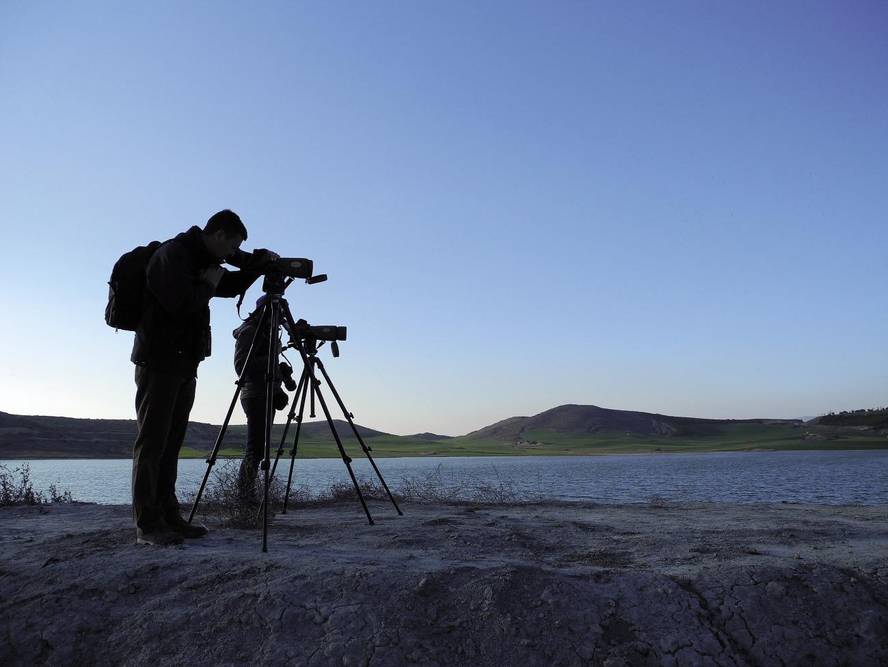Impact of ornithological tourism on bird populations
The tourism of observation of nature has experienced an important growth in recent years, especially ornithological. Thanks to globalization, it is becoming easier to get anywhere, even to places where we were not going through the head, and you can get detailed information on how to get to such a place or how to find a specific bird.
Many warn of the risks that this phenomenon can entail, which can affect the birds or the environment in which they live. Birds are a vulnerable resource that can be affected by a punctual isolated event.
Among the negative effect factors are, in the first place, the drawbacks. The massive influx of people to certain places can cause discomfort to birds, while if the discomfort is repeated, they can decide to leave the place. The lack of knowledge on the part of visitors is usually the main reason for these drawbacks, although in some cases it can be said that some precede the welfare of birds to their correct observation. The latter can cause serious damage.
The mere presence of birds in the breeding or rest area can be a source of discomfort that hinders their normal functioning. Unscrupulous guides and tourists use apeos to attract retracted and hard-to-see birds. The use of these apeos requires an official authorization distributed by the corresponding administration.
They are usually authorized for certain research projects. The free use of claims, however, is not allowed, as they can cause serious discomfort. And when you hear the apeo, the bird thinks it is a competitor and will protect its environment. This behavior causes higher energy consumption for the bird and, sometimes, predators remove their eggs or offspring, trying to protect their breeding area.
In addition, if drivers and tourists approach a place frequented by this bird, as usual, and in breeding times (several times on the same day), the bird leaves growth due to the excessive demand for energy that means the protection of the medium.
In recent times, the photography sector of nature is also one of the main attractions for birds. The development of digital technology has multiplied bird photographers and today there are many more citizens who have access to materials and photographic processes. Hence, there are currently many more bird photographers than 20 years ago. However, the knowledge of some of these photographers is not enough to act with living beings who live. To make a good photo, sometimes they get too close, they get too close to the nests, they use apeos (auditory or visual)... and to better position the photo, they change the environment of the nest..., that is, they perform a series of activities that can have negative consequences for birds and their environment. The realization of these works without knowledge, permits and adequate inspections can pose a serious risk for the bird object of the photograph.
There is another danger that is not mentioned much: expand the location of a few birds. Often, ornithological tourism has as its object the observation of rare, rare or difficult to observe birds, since the possibilities are scarce. Although the location of the places of residence of these birds is usually strictly monitored both by the administration and by local drivers (who do not want other drivers to know it), in the end it is discovered, even more today, in a time when the information is so widespread and is spread so easily. The fact that the place of residence of some species of rare birds is expanded will mean a greater influx of tourists and, of course, greater discomfort, as well as the presence of grandchildren or malevolent people.
Birds are populations so small and localized that the failure of a laying or the loss of a single partner can have very serious consequences. A small drawback is enough to cause a disaster.
All these adverse effects can be avoided and reduced by an adequate management of the environment, preparing the appropriate infrastructures and properly training professionals. To do this, the administration must properly regulate this activity, taking into account the opinions of professionals in the sector, so that tourism and the conservation of natural resources are compatible with each other. To achieve this goal it is essential to raise awareness to professionals, especially drivers, who have a direct relationship with birds and their environment. It is interesting the experience of the so-called “Product Clubs”, among which are Extremadura and Navarre, where the demands are collected and encouraged, as well as the ethical aspects of the activity.
Moreover, I believe that ornithological tourism has more positive than negative aspects. The most positive, undoubtedly, is that it values the birds and their environment. The visibility of citizens has changed in several places when people have come from outside to see their cultural heritage, for pure economic interest: “If people go to see birds (and to spend money) we have to look after them.” An education is necessary for citizens to worry about taking care of their environment and reconcile the lives of citizens with bird watching. There are many ways of attention and they can spread to everyone.
On the other hand, the diffusion of some birds can help (respecting certain limits) to avoid the disappearance of their populations by ignorance. And how many times has not an infrastructure or activity been done and the environment of an interesting population has been altered, apparently without any interest, but in danger of extinction? Disability is usually the cause of this behavior... But ornithological tourism can contribute to better know our environment through scientific projects of citizenship. These types of projects are spreading all over the world (especially birds), driven by local (Ornitho) or general (eBird) platforms.
Remember that the ornithological tourist, in general, is quite aware about the need and behavior of the environment. Probably, ornithological is the most sustainable type of tourism that exists.







